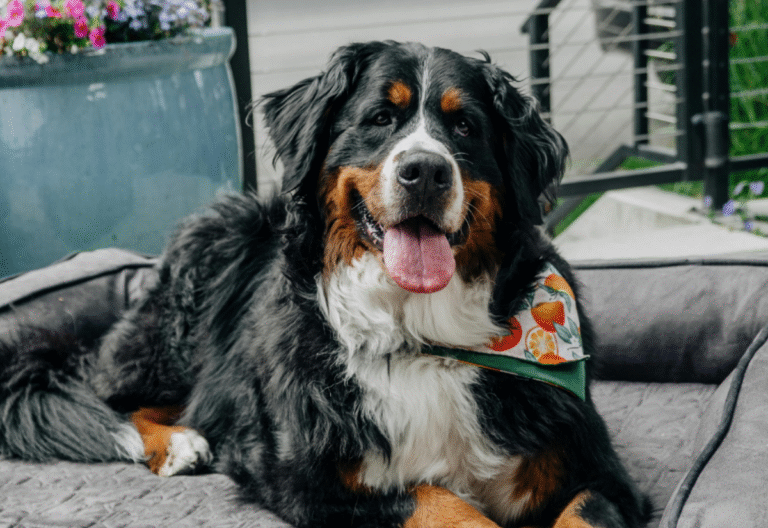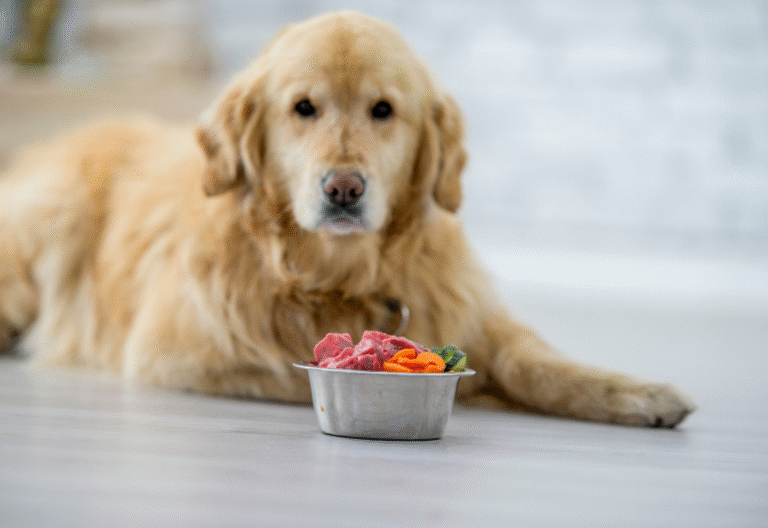Winter Care for Senior Dogs with Arthritis: Keeping Your Pup Comfortable
Watching your once-energetic pup move a little slower each winter morning can tug at your heart. If you’re a devoted pet parent caring for a senior dog with arthritis, you already know that winter care for senior dogs with arthritis requires extra attention and love. The dropping temperatures don’t just signal the need for your own warm coat – they mean it’s time to create a comprehensive comfort plan for your furry family member.
Cold weather can transform simple activities like morning walks into challenging endeavors for arthritic dogs. But here’s the good news: with the right approach to winter care for senior dogs with arthritis, you can help your beloved companion navigate the season with greater ease and joy.

Understanding Why Winter Hits Arthritic Dogs Harder
Have you ever noticed how your own joints feel on a particularly cold morning? Senior dogs with arthritis experience something similar, but often more intensely. The science behind this discomfort is straightforward yet significant.
When temperatures plummet, several things happen to your dog’s body:
- Blood flow to joints decreases, reducing natural lubrication
- Muscles and tendons tighten, creating additional stiffness
- Barometric pressure changes can increase inflammation in arthritic joints
- Cold surfaces can worsen existing joint pain through direct contact
Many pet parents notice their senior dogs becoming more reluctant to go outside, taking longer to get up from their beds, or showing visible stiffness in their movements. These aren’t signs of stubbornness – they’re your dog’s way of communicating that they need extra support during the colder months.
Creating an Arthritis-Friendly Indoor Haven

Your home becomes your senior dog’s primary sanctuary during winter, so making it as joint-friendly as possible is crucial for their comfort and mobility.
Transform Their Sleeping Area Think of your dog’s bed as their personal therapy center. Invest in a high-quality orthopedic bed with memory foam that contours to their body, providing crucial support for aching joints. Place this bed away from drafts – near a heating vent works wonderfully, but avoid direct heat sources that could overheat your pup.
Consider adding a washable fleece blanket or a pet-safe heated pad designed specifically for dogs. These additions provide gentle, consistent warmth that can significantly reduce morning stiffness.
Optimize Your Home’s Temperature While you might be comfortable at 68°F, your arthritic senior dog will appreciate a slightly warmer environment, ideally between 70-72°F. Pay special attention to areas where your dog spends the most time, ensuring they’re free from cold drafts that can seep under doors or through windows.
Make Navigation Easier Slippery hardwood or tile floors can become hazardous for dogs with compromised mobility. Consider adding non-slip rugs or yoga mats in high-traffic areas. These simple additions can prevent falls and give your dog confidence to move around more freely.
Adapting Your Outdoor Adventures
Just because it’s cold doesn’t mean outdoor time should disappear entirely. Fresh air and gentle movement remain essential for your senior dog’s physical and mental well-being.
Rethink Your Walking Strategy Replace those long, ambitious walks with shorter, more frequent outings. Three 10-15 minute walks often work better than one 45-minute trek. This approach keeps joints moving without causing fatigue or overexertion.
Before heading out, let your dog warm up indoors with some gentle stretching or slow movement. Think of it as their personal pre-workout routine.
Invest in Proper Winter Gear A well-fitted dog coat isn’t just adorable – it’s therapeutic equipment for arthritic seniors. Look for coats that cover the back, chest, and belly, as these areas lose heat quickly. The coat should be snug but not restrictive, allowing for full range of motion.
Don’t overlook paw protection. Booties with good grip can prevent slips on icy surfaces and protect sensitive pads from salt and cold. If your dog resists booties, try paw balm designed for winter protection.
Choose Your Routes Wisely Stick to cleared, non-slip surfaces whenever possible. Avoid icy sidewalks, steep inclines, or areas where your dog might need to jump over snow banks. Your regular route might need seasonal modifications, and that’s perfectly okay.
Keeping Those Joints Moving: Winter Exercise Solutions
The temptation to hibernate is real, but maintaining some level of activity is crucial for managing arthritis symptoms and preventing further joint deterioration.
Indoor Activity Ideas
- Gentle play sessions: Slow-paced games of hide-and-seek or puzzle toys that encourage movement
- Controlled stair climbing: If you have stairs, supervised up-and-down sessions can provide excellent low-impact exercise
- Physical therapy exercises: Your veterinarian can teach you specific stretches and movements designed for arthritic dogs
- Interactive feeding: Use puzzle feeders or hide treats around the house to encourage natural movement
Swimming: The Ultimate Winter Exercise If you have access to a heated indoor pool or dog rehabilitation facility, swimming provides unparalleled exercise for arthritic dogs. The buoyancy reduces joint stress while providing excellent muscle strengthening. Many areas now offer canine hydrotherapy services specifically designed for senior and mobility-impaired dogs.
Medical Support: Your Veterinary Team as Winter Allies
Don’t go it alone this winter. Your veterinary team can be invaluable partners in managing your senior dog’s arthritis during the challenging cold months.
Supplement Strategies

- Glucosamine and chondroitin: These building blocks support cartilage health and may slow joint deterioration
- Omega-3 fatty acids: Powerful anti-inflammatory compounds that can reduce joint inflammation
- Turmeric: This natural anti-inflammatory has shown promise in managing arthritis symptoms in dogs
Always consult your veterinarian before starting any supplement regimen, as they can interact with existing medications or may not be appropriate for dogs with certain health conditions.
Pain Management Options Modern veterinary medicine offers numerous pain management strategies beyond traditional NSAIDs. Your vet might recommend:
- Prescription joint supplements: Pharmaceutical-grade options often more potent than over-the-counter varieties
- Injectable joint protectants: Monthly shots that can provide significant relief for some dogs
- Alternative therapies: Acupuncture, laser therapy, and massage have all shown benefits for arthritic dogs
- Weight management medications: If needed, to reduce joint stress
Daily Comfort Strategies That Make a Real Difference
Sometimes it’s the small, consistent changes that create the biggest impact on your senior dog’s quality of life.
Weight Management: Every Pound Matters Extra weight exponentially increases stress on arthritic joints. Even losing 2-3 pounds can significantly reduce pain and improve mobility for many senior dogs. Work with your vet to determine your dog’s ideal weight and create a realistic plan to achieve it.
Environmental Modifications

- Ramps and steps: Help your dog avoid jumping onto furniture or into cars
- Raised food and water bowls: Reduce neck and back strain during meals
- Regular nail trims: Overgrown nails can alter your dog’s gait and increase joint stress
- Non-slip surfaces: Provide stable footing throughout your home
Grooming Considerations Longer coats can provide extra insulation, but they also require more maintenance. Keep your dog’s coat clean and dry, as wet fur loses its insulating properties. Consider professional grooming every 6-8 weeks to maintain coat health without the stress of lengthy sessions.
Recognizing When to Seek Additional Help
Understanding when your senior dog needs more support is crucial for their well-being. Watch for these signs that may indicate their current management plan needs adjustment:
- Increased reluctance to move or exercise
- Changes in appetite or sleeping patterns
- More frequent accidents in the house (mobility issues can make it harder to get outside in time)
- Visible signs of pain: panting, restlessness, or vocalizing when moving
- Behavioral changes: increased irritability or withdrawal from family activities
Don’t wait until spring to address these concerns. Early intervention often leads to better outcomes and improved comfort.
Final Thoughts: Love, Patience, and Small Victories

Caring for a senior dog with arthritis during winter requires patience, creativity, and lots of love. Some days will be better than others, and that’s completely normal. Your dog has spent years bringing joy to your life – now it’s your turn to ensure their golden years are as comfortable and happy as possible.
Remember that small improvements in comfort can lead to significant improvements in quality of life. The ramp you install today might give your dog months of independence. The heated bed might mean better sleep and less morning stiffness. The extra few minutes you spend warming them up before walks might be the difference between a painful outing and an enjoyable adventure.
Every senior dog is unique, and what works for one might not work for another. Stay flexible, observe your dog’s responses to different strategies, and don’t hesitate to adjust your approach as needed. Your veterinarian, local pet stores, and online communities of senior dog parents can all be valuable resources as you navigate this journey.
Winter doesn’t have to be a season of suffering for dogs with arthritis. With thoughtful planning, consistent care, and a lot of love, you can help your faithful companion find comfort and joy even on the coldest days. After all the years of unconditional love they’ve given you, ensuring their comfort during their senior years isn’t just responsible pet ownership – it’s a beautiful way to honor the bond you share.
Remember: You know your dog better than anyone. Trust your instincts, advocate for their needs, and celebrate the small victories along the way. Your senior dog’s tail might not wag as vigorously as it once did, but with the right winter care plan, it can still wag with contentment and joy.
💌 Want more tips for supporting your aging pup?
Join our email list to get our best articles, exclusive product guides, and more.






